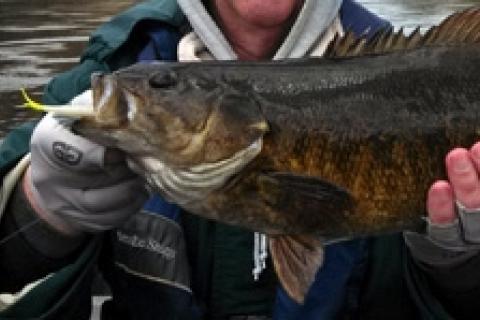
 Most savvy anglers understand that lures are tools, and that given situations often dictate the appropriate choice, be it a spinnerbait, crankbait, jig or some other style of bait. But just as there are times when a larger Phillips head screwdriver does a better job than a smaller one, there are instances when a particular lure within a general classification is the one the fish want. And often they'll clue you in if you listen.
Most savvy anglers understand that lures are tools, and that given situations often dictate the appropriate choice, be it a spinnerbait, crankbait, jig or some other style of bait. But just as there are times when a larger Phillips head screwdriver does a better job than a smaller one, there are instances when a particular lure within a general classification is the one the fish want. And often they'll clue you in if you listen.
Consider one of my Allegheny River guide trips last week in Pennsylvania. Smallmouth bass were starting to show up in near spawning flats, even though the actual bedding period was still a couple of weeks away. Leading up to this trip suspending hard jerkbaits had been the hot bait, the jerk-pause action of the lure consistently calling in fish.
On this day, however, the hard jerkbait was only marginally productive — a fish here and there. And it was taking an exceptionally lengthy pause (the clue) to get those bites. Taking this hint, I switched to a 5-inch soft jerkbait, which it a great bait for fishing with just the occasional twitch, and then allowed to flutter down in an almost "deadstick" manner.
My first cast produced a nice smallmouth. I quickly rigged my client with a pearl colored soft jerkbait, and then moved back to an area that I felt held fish, but hadn't produced much earlier in the day. Over the next hour-and-a-half we boated a bunch of nice river bronzebacks, the best five of which would have easily weighed 18 pounds.
While hard and soft jerkbaits are fished in a similar way, and can be used in comparable situations, most times bass will have a preference of one over the other. And they'll often tell you.
- 2341 views

